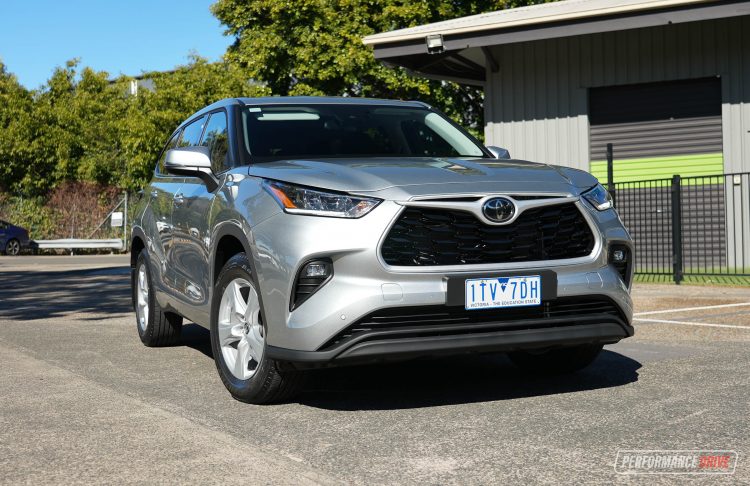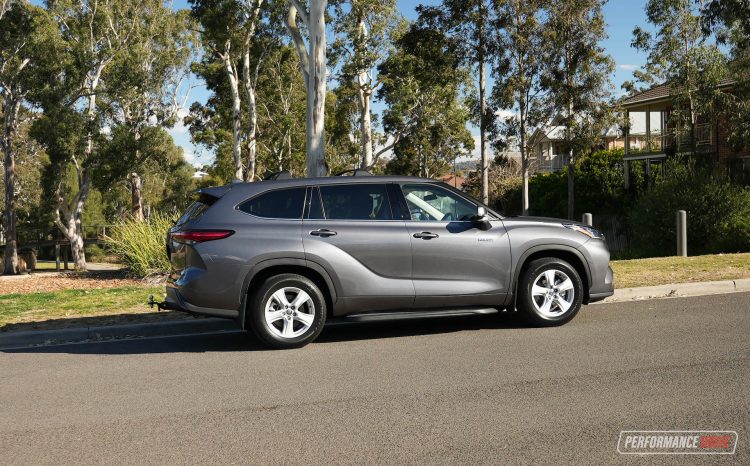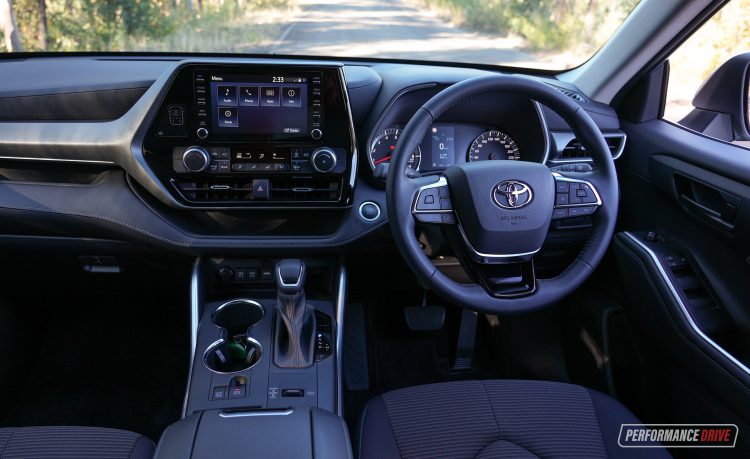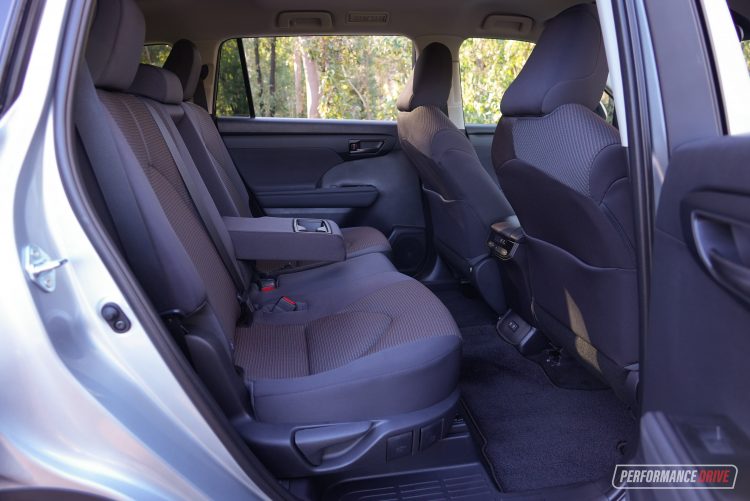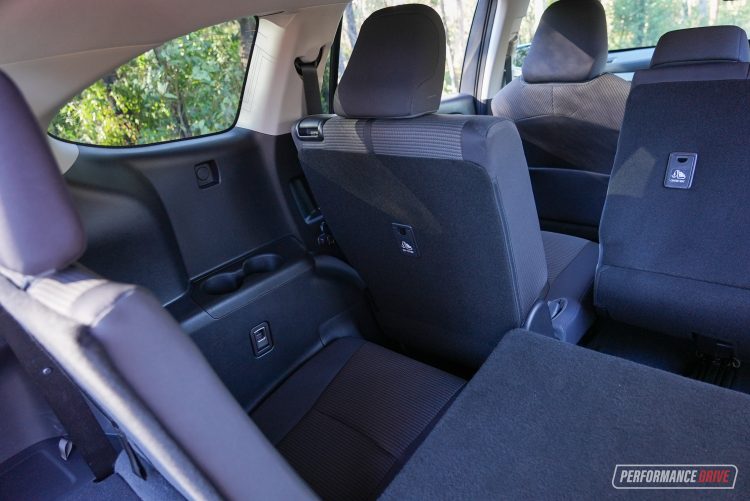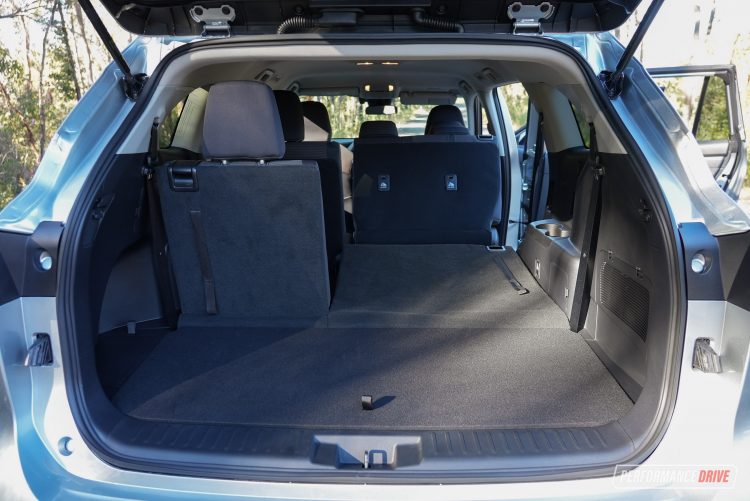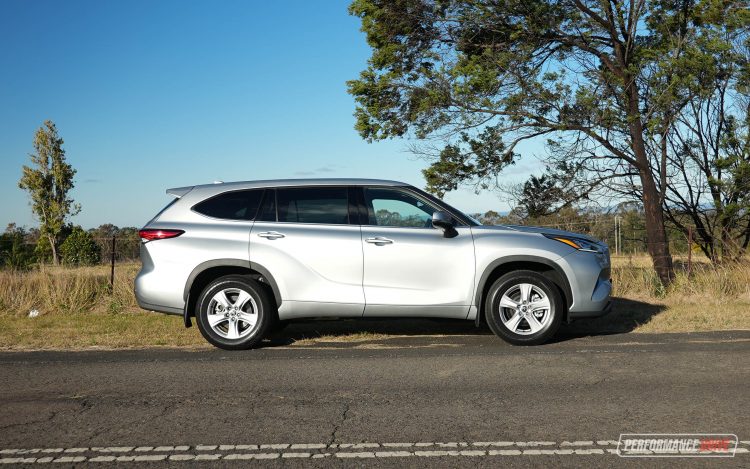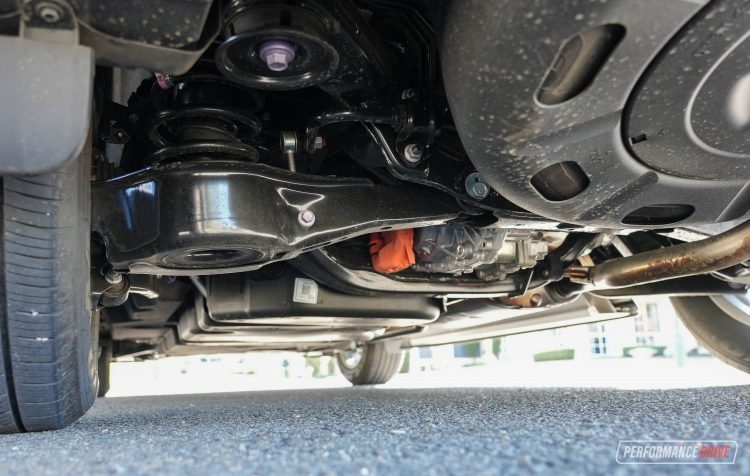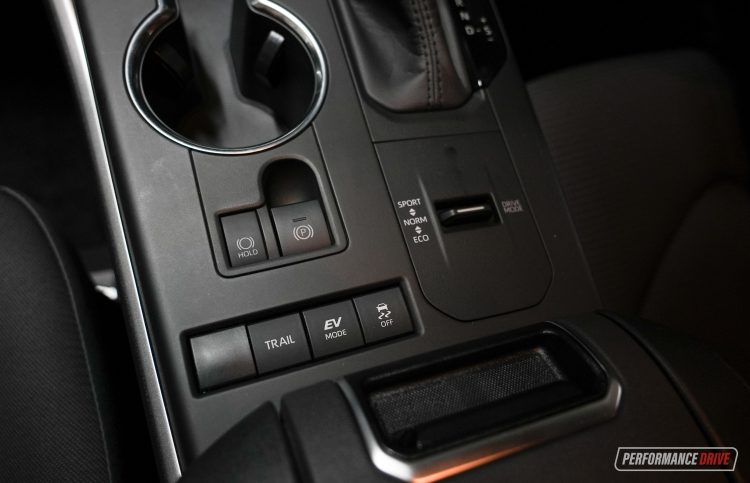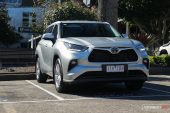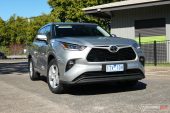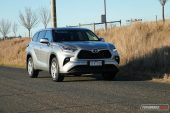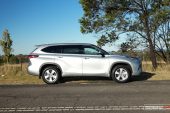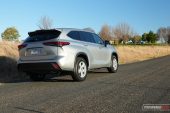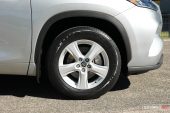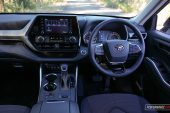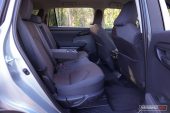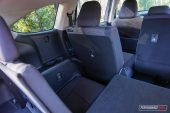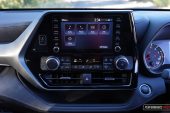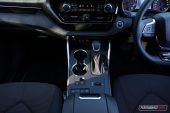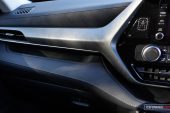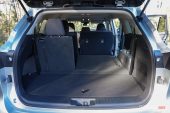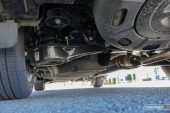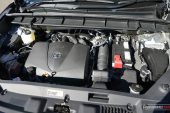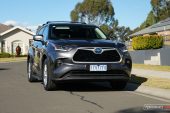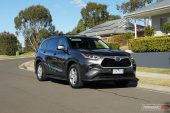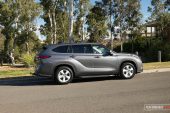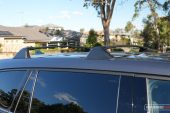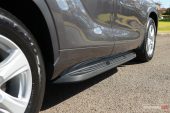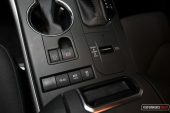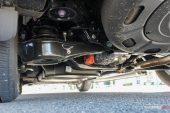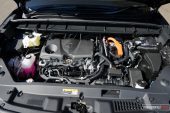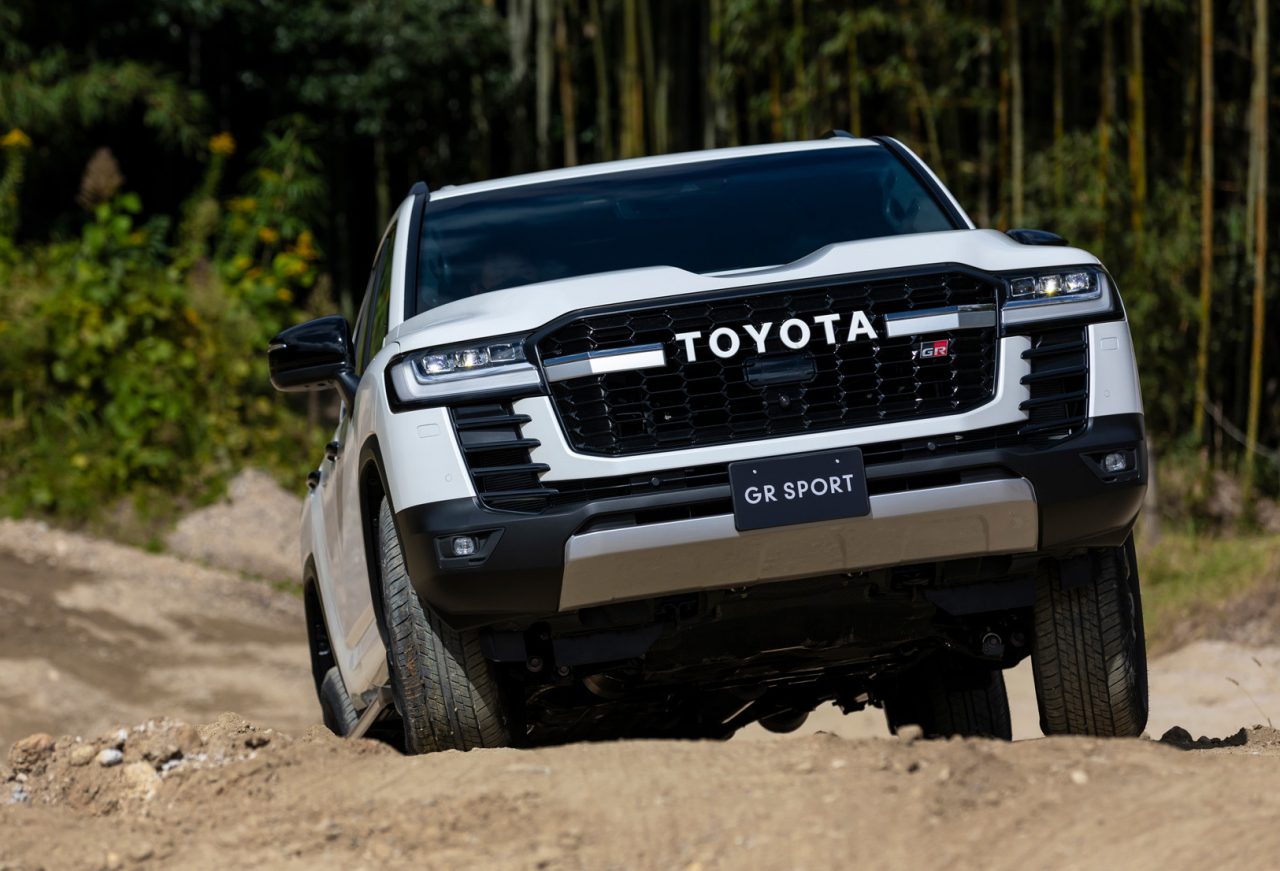When Toyota releases a new generation of its comprehensive vehicle range, everyone listens. The competition also develops nerves as the brand is often the go-to choice for many Australians. In fact, the Japanese brand consistently sells double the number of cars as the brand in second place. One of the reasons for its success is because of models like the Toyota Kluger.
The Kluger was one of the first models on Aussie shores to coin the term soft roader. In 2003, it was released as a comfortable alternative to ladder frame chassis SUVs that were too heavy duty for the modern city life. In the Kluger’s case, this is thanks to its unibody construction based on the same platform as the Camry, with independent suspension.
2021 sees the Kluger evolve further with the introduction of the fourth generation. It is now redesigned, bigger, and finally available with hybrid technology in Australia. The range begins with the GX, then the GXL, and the Grande at the top. All variants come with seven seats.
Three drivetrains are offered for all variants. You can get a 3.5L V6 petrol fossil in front-wheel drive or all-wheel drive and paired to an eight-speed auto gearbox. Or there is the new ‘e-Four’ 2.5L four-cylinder petrol engine matched to three electric motor generators, paired with a constantly variable transmission (CVT).
Here, we’re putting both engines under the microscope in the base GX trim. Prices kick off from $47,650 for the front-wheel drive GX V6 and rise to $75,400 for the Grande Hybrid. The GX Hybrid we’re also testing starts from $54,150 (all excluding on-road costs)
2022 Toyota Kluger GX V6 FWD – THE SPECS
[column width=”47%” padding=”6%”]Engine: 3.5-litre V6 petrol
Output: 218kW@6600rpm / 350Nm@4700rpm
Transmission: Eight-speed auto
Drive type: Front-wheel drive
Wheels: F & R: 18×8.0, 235/65
ANCAP: Five stars
Tare weight: 1840kg
Power-to-weight: 8.4:1 (kg:kW)
Official fuel economy: 8.7L/100km
Economy during test: 9.0L/100km
Fuel capacity/Type: 68L/91 RON[/column] [column width=”47%” padding=”0″]Power efficiency: 25.05kW:L/100km
0-60km/h: 4.03 seconds*
0-100km/h: 7.50 seconds*
60-110km/h: 4.82 seconds*
1/4 mile: 15.57 seconds at 153.4km/h*
Max acceleration: 0.713g
100-0km/h braking: 3.15 seconds at 41.91 metres*
Max deceleration: -1.068g
Decibel at idle: 36*
Peak decibel at 60-100km/h: 84*
Priced from: $47,650[/column][end_columns]
2022 Toyota Kluger GX Hybrid – THE SPECS
[column width=”47%” padding=”6%”]Engine: 2.5-litre four-cylinder hybrid
Output: 184kW / 391Nm (combined)
Transmission: CVT auto
Drive type: All-wheel drive
Wheels: F: 18×8.0, 235/65
ANCAP: Five stars
Tare weight: 2005kg
Power-to-weight: 10.89:1 (kg:kW)
Official fuel economy: 5.6L/100km
Economy during test: 6.5L/100km
Fuel capacity/Type: 65L/95 RON
Power efficiency: 32.85kW:L/100km[/column] [column width=”47%” padding=”0″]0-60km/h: 4.01 seconds*
0-100km/h: 8.60 seconds*
60-110km/h: 6.25 seconds*
1/4 mile: 16.28 seconds at 142.0km/h*
Max acceleration: 0.572g
100-0km/h braking: 3.21 seconds at 43.69 metres*
Max deceleration: -1.050g
Decibel at idle (on standby): 26*
Peak decibel at 60-100km/h: 86*
Priced from: $54,150[/column][end_columns]
* Figures as tested by PerformanceDrive on the day. Factory claims may be different
2022 Toyota Kluger GX – THE PACKAGE
The Kluger has never been designed to look too fancy. Toyota would not want to give any impression that it is not practical. But the design of this fourth generation comes as close to elegant as it has ever been before. Its overall shape has not evolved too much, but the sheet metal and contouring have.
At the front, the headlights swoop up the bonnet and a trapezoidal glossy black grille separates them. There are chrome surrounds and a lower chrome bar that add the look of strength. Large bumper indents that encompass small fog lights add some aggression to its stance, too. Plastic wheel arches make the Kluger look more rugged, and the rear wheels are encased by puffed out wheel arches to make it all appear bigger and stronger.
At the rear, it’s a rather conservative affair, but with hints of sportiness. The taillights are wider and thinner than before, while a large in-built upper spoiler and lower plastic bumper provide some character and attitude.
On the inside, the theme is still conservative but modern. Most notably, materials and grab points feel durable and strong, which is important in an SUV that needs to withstand kids climbing around and treating it like a cubby house. Dominating up front is a hexagonal design that houses the multimedia screen. The dark grey interior tone is broken up by large silver plastic panels. A semi-digital instrument cluster is kept clean and simple to grasp – an element Toyota always does well in. But that means that it lacks the pizzaz many other SUVs on the market possess.
All models get an 8.0-inch multimedia touch-screen display with Bluetooth, Apple CarPlay and Android Auto. Although it is easy to use, it is the same one that has been used by Toyota for a while now. It’s starting to look archaic with its raw layout and basic graphics. We believe it can still look modern while maintaining its ease of use. Similarly, the GX gets the familiar 4.2-inch cluster info display previously used, and the GXL and Grande go with a 7.0-inch one. A wireless phone charger is not included in any model, although there is a neat cubby hole to store your phone in the front.
Toyota has hit the mark in terms of interior space and practicality. There are lots of storage areas, including a large shelf in the centre and left side dash. The centre console is huge, and door pockets fit bottles and more. It is truly made for large families, offering loads of room to move about. The overall length has grown by 76mm, which translates to 30mm more legroom distributed over all three rows. 60/40 split/fold seats in the second and third rows make it an adaptable space to use, and rear climate control and USB ports ensure second row passengers are not neglected. Though, there are no USB ports in the third row, at least on the GX.
Officially, the boot measures 1150 litres with both rear rows folded down. If all seats are in use, the space available is still a commendable 241 litres. To give perspective, the Mazda CX-9 leaves you with 230 litres of space with all rows in use, and the Ford Everest offers 249 litres. The Hyundai Santa Fe offers 120L.
No matter which variant you choose, you get LED front and rear lights, heated power side mirrors, rain-sensing wipers, tri-zone climate control (except GX V6), pre-collision emergency braking, active lane departure assist, auto high-beam, adaptive cruise control, intersection turn assistance, speed sign recognition, blind-spot monitor, rear cross-traffic alert, and front and rear parking sensors.
Its not until you get to the Grande where you see the powered tailgate with a kick sensor, retractable sunshades in the second row, a panoramic glass moonroof, driver and front passenger ventilated seats, leather interior, head-up display, panoramic-view cameras, and an upgrade from six to 11 speakers and a JBL system.
The Kluger comes with a generous five-year, unlimited kilometre warranty, and 10 years on the hybrid battery. Toyota extends that warranty to seven years on the engine if logbook servicing is adhered to. Servicing is required every 15,000km or 12 months. A real standout is that every new Kluger comes with capped-price servicing of $250 annually for up to five years, with complimentary map upgrades for three years.
2022 Toyota Kluger GX – THE DRIVE
As you would expect the two engines in the new Kluger feel and perform very differently. The new hybrid combines the power of a newish 2.5-litre four-cylinder engine and three electric motors – two for the front axle and one for the rear axle. A self-charging nickel-metal hydride battery stores energy captured from braking. With a rear electric motor, the AWD system can send up to 100 percent of the power to the front wheels, or up to 80 percent to the rear, depending on conditions. Combined outputs of the hybrid system are a healthy 184kW. This translates to a 0-100km/h time of 8.60 seconds, according to our Vbox tests.
The familiar V6 model gets going with a hefty 3.5-litre engine which outputs an impressive 218kW of power and 350Nm of torque. It achieves the 0-100km/h time in a quite impressive 7.60 seconds, according to our tests.
But the most obvious disparity is in the fuel consumption. The AWD hybrid burns a measly 5.6L/100km on the official average. This is a remarkable result for a large SUV. Our average clocked in a little higher at 6.5L/100km. On the other hand, the V6 FWD burns 8.7L/100km. Our average scored 9.0L/100km, which was biased towards more economical highway driving.
With today’s petrol prices and focus on greener alternatives, the V6 is probably not the best option for most buyers. And that is with taking on board that the V6 does not need a minimum 95 RON petrol like the hybrid does. Based on a near-empty 68L tank and fuel costing $1.60 per litre, it costs over $100 to refill the V6. CO2 emissions are 202g/km versus 128g/km in the hybrid. We figure Toyota has slowly made the move in the right direction, considering the V6 was the only option in the previous generation. It’s now up to consumers to make their choice as every spec is available with both engines.
On the road, the V6 feels and sounds more urgent with that gutsy V6 sound, and offers about 15 per cent more power. But the revs need to be high to get this sensation. It lacks some low-down torque to back up the power. The hybrid is not exactly thrilling, but it has more low-down torque thanks to the linear and instant pull of electric power combining with petrol power. Then, as your speed increases, it starts to sound shrill and tinny as the engine speed rises and electric power winds back. But it performs more than adequately in completing its people-moving responsibilities.
The V6 also offers that old-fashioned progress sensation with its conventional eight-speed auto transmission. Whereas, the e-Four’s continuously variable transmission feels less ‘real’ to drive – we are so used to listening to the engine to understand what progress is being made. Though, the V6’s transmission can seem a little confused during transitions at times. In this regard, the hybrid offers a smoother increase in speed than the V6.
We noticed there is also a difference in how the cruise control operates with the two engines. In the V6, when proceeding down a steep hill with the cruise on, it starts to beep without braking (unless there is a car in front), and it allows the car roll well over the speed you have set. It is super-annoying when driving basically anywhere that is not flat. It should stick to your set speed like all other distance-assist cruise control systems do – or at least creep a small amount over the set speed before braking. We did not notice this trait in the e-Four.
In terms of ride and handling, the US-built Kluger has a completely new multi-link front and rear suspension setup. It’s a soft suspension that makes going over bumps a smooth and stable affair. It also helps that Toyota always uses high-wall tyres to help cushion nasty potholes and speed humps. The new setup is notably quiet when in action – no nasty thuds travel into the interior. But this bias towards softness and comfort means that its handling abilities are on the sloppier side. There is less agility when momentum or tracking suddenly needs to change. Though, its heavy weight plays a factor here, too; weighing in at 1840kg for the 2WD V6 GXL and 2005kg for the e-Four GXL (tare).
Braking power and braking feel are always great in Toyotas, and the Kluger is no different. It has now inherited a more powerful braking package that features ventilated (instead of solid previously) 340mm front discs and ventilated 338mm rear discs to help slow down the near-2000kg mass. During our testing though we recorded 100-0km/h in 41.91m in the V6, and 43.69m in the hybrid. This was recorded on the same strip of tarmac we always use, where other SUVs in this class have recorded under 38m. Obviously a one-off stop doesn’t tell the full story, as longevity and fade resistance are also important. And in those areas the Kluger seems fine.
If you plan on towing, it is not the Kluger’s specialty. It is rated at 2000kg, braked. There are heavier-duty SUVs more suited to towing, such as the Prado (up to 3000kg), Isuzu MU-X (up to 3500kg), and Mitsubishi Pajero Sport (up to 3100kg). But it will easily pull a small camper trailer, tinnie, or Bunnings hire trailer.
Those high-profile Toyo tyres and 208mm of ground clearance help the Kluger eat up dirt roads and rough surfaces competently. All powertrains offer Eco, Normal and Sport driving modes, and the hybrid offers an extra Trail mode that Toyota says is designed to improve traction in slippery off-road conditions.
2022 Toyota Kluger GX – THE VIDEO
2022 Toyota Kluger GX – THE VERDICT
The Toyota Kluger has always been a stablemate model, which is kind of like most Toyotas, really. But like with the RAV4, Corolla and Yaris, the Kluger in its fourth generation has become modernised and more relevant among today’s consumer expectations. Most-part because of the new hybrid engine. It will be interesting to see if sales figures of the V6 dwindle, especially as pricing of the hybrid comes very close to the V6.
Engines aside, the new Kluger is now a bigger and more practical seven-seat SUV than its predecessor. It feels strong, secure, and familiar to drive – and the new design is nice, and careful not to overwhelm.
[column width=”47%” padding=”6%”]PROS:
– Huge cabin with lots of storage and passenger space
– Hybrid available across the range, offers excellent fuel consumption
– Soft and smooth ride suits Aussie roads
– Plenty of features as standard on base GX
[/column] [column width=”47%” padding=”0″]CONS:
– Thirsty V6
– No wireless phone charging or third row USB ports on GX
– Touch-screen is a little archaic compared to others on the market[/column][end_columns]
As always, if you’re thinking about buying a new car don’t forget to click here to speak with our car buying specialists.
